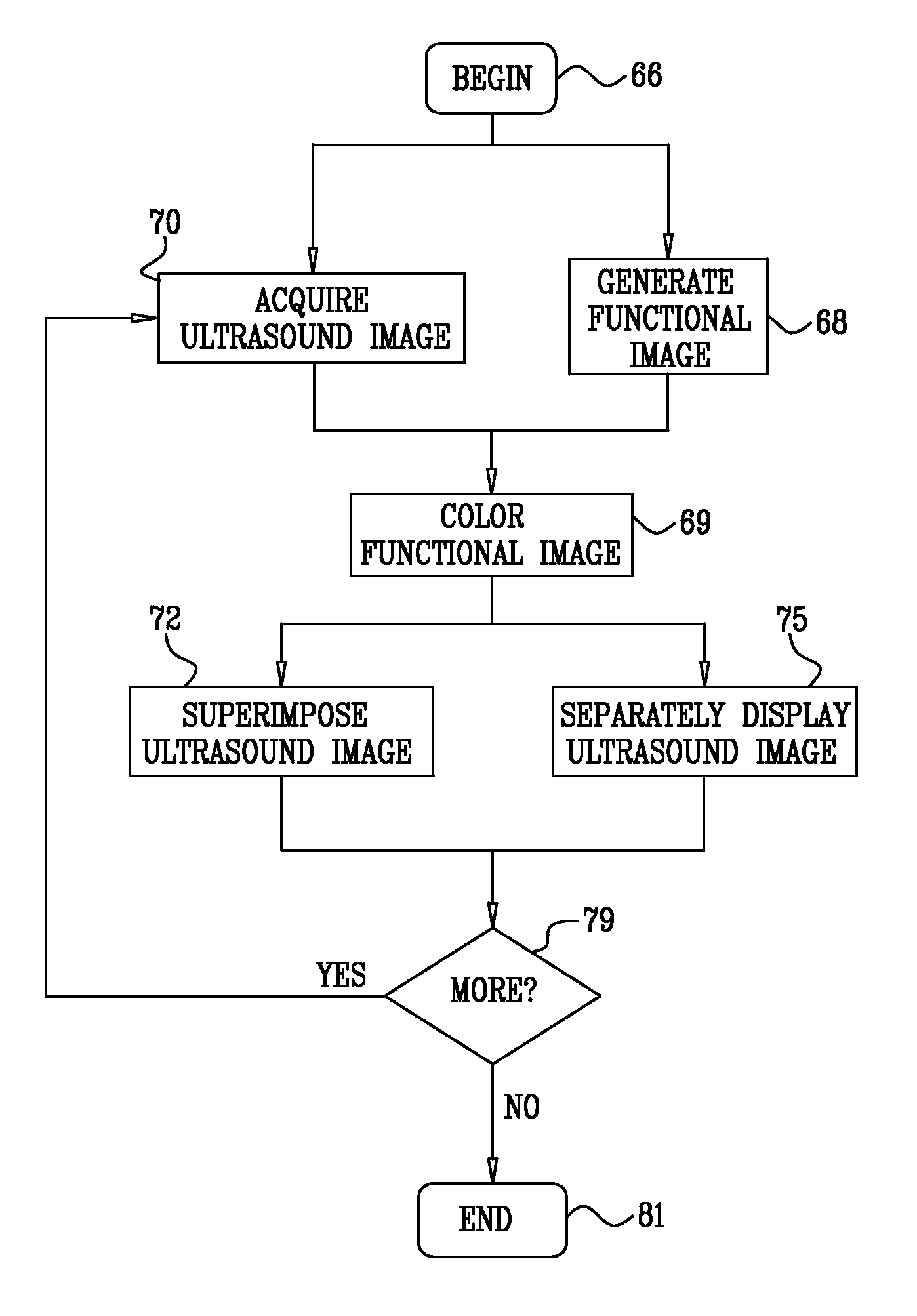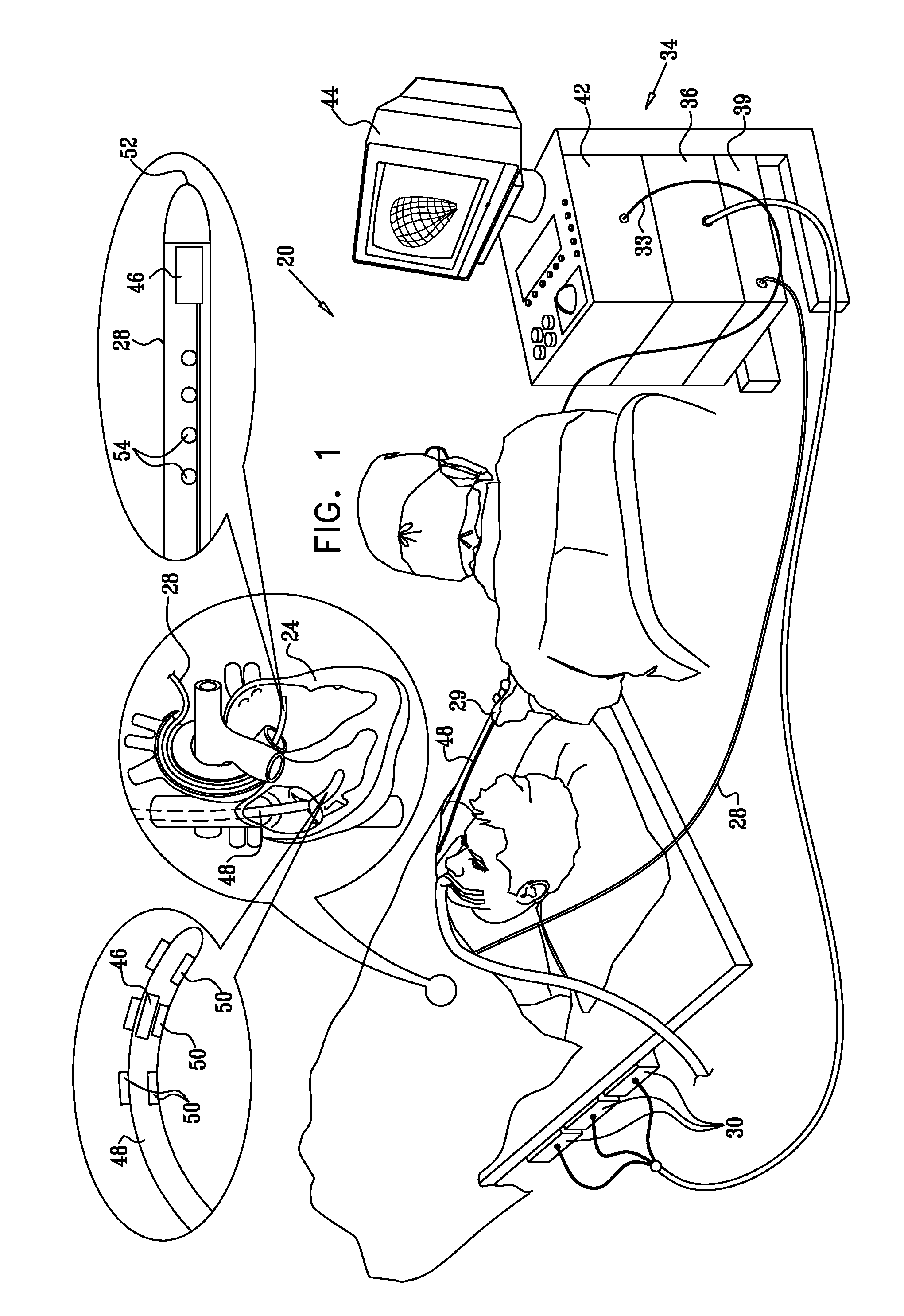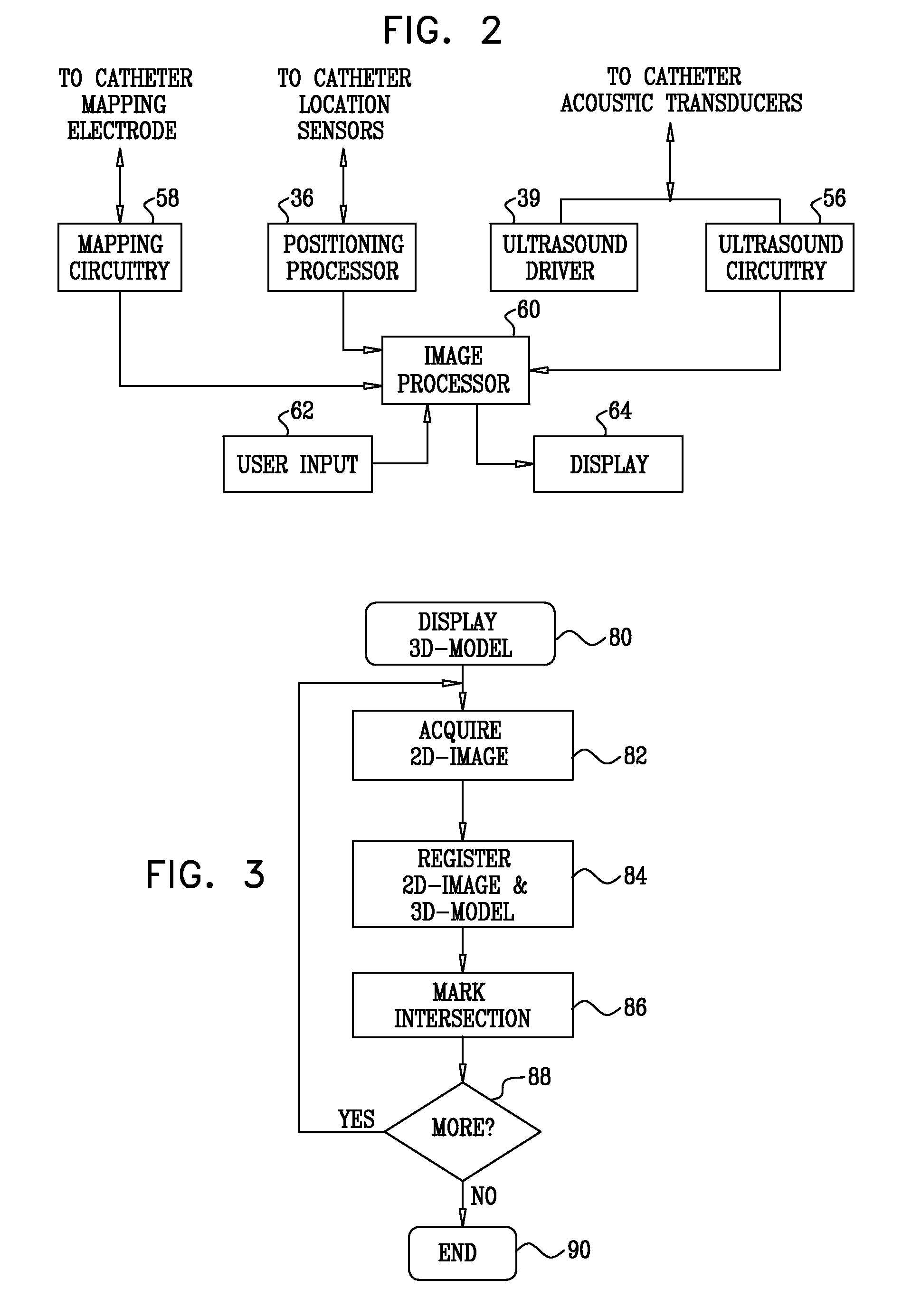Coloring electroanatomical maps to indicate ultrasound data acquisition
a technology of electroanatomy and ultrasound, applied in the field of mapping and reconstruction of body organs, can solve the problems of difficult for users to determine when adequate image data have been acquired, and block the user's view of the heart chamber by other tissue reflection,
- Summary
- Abstract
- Description
- Claims
- Application Information
AI Technical Summary
Benefits of technology
Problems solved by technology
Method used
Image
Examples
embodiment 1
Alternate Embodiment 1
[0058]Reference is now made to FIG. 4, which is a detailed flow chart of a method of coloring an electroanatomical map or other functional map to indicate ultrasound data acquisition in accordance with an alternate embodiment of the invention. It will be understood that “coloring”, also referred to herein as the application of pseudocolor, denotes a computing task and involves modifications to memory in which image data is stored. The results of the operation may be visualized on a computer monitor as a colored display. The method is discussed with reference to an electroanatomical map by way of example. However, the method is applicable to other functional images of the heart, so long as the topology of the heart is shown and can be related to the location of the ultrasound data. In initial step 66, using instrumentation described above with reference to FIG. 1 and FIG. 2, a mapping catheter is introduced into a subject using well-known techniques. An ultrasou...
embodiment 2
Alternate Embodiment 2
[0075]This embodiment is similar to alternate embodiment 1, except that an inverse display mode can be used for displaying a three-dimensional image, e.g., the image 100 (FIG. 5) in steps 72, 75 (FIG. 4). The data acquisition for the ultrasound images is essentially the same, but instead of showing high gray scale levels for tissue, the three-dimensional ultrasound image indicates the blood in the chamber or vessel, and is an indicator of the chamber or vessel blood volume.
embodiment 3
Alternate Embodiment 3
[0076]Other physiological data that may be mapped for co-display in steps 72, 75 (FIG. 4) with ultrasound images and pseudocolor applied colored to indicate sufficiency of ultrasound data collection as described above. Volumetric intraluminal ultrasound imaging as described by the above-noted U.S. Pat. No. 6,066,096 can be used. Other physiological parameters that can be mapped include temperature, blood flow rate, chemical properties and mechanical activity, e.g., regional wall motion. For example, areas of high-speed flow detected by an ultrasound catheters, as disclosed, e.g., in the above-noted U.S. Pat. Nos. 6,716,166 and 6,773,402, may be identified in a Doppler image and registered with stenoses in blood vessels observed in a three-dimensional ultrasound image. As another example, a chemical sensor may be used to identify areas of the heart with low NADPH levels, indicative of ischemia. Such areas may be registered with corresponding areas observed on ul...
PUM
 Login to View More
Login to View More Abstract
Description
Claims
Application Information
 Login to View More
Login to View More - R&D
- Intellectual Property
- Life Sciences
- Materials
- Tech Scout
- Unparalleled Data Quality
- Higher Quality Content
- 60% Fewer Hallucinations
Browse by: Latest US Patents, China's latest patents, Technical Efficacy Thesaurus, Application Domain, Technology Topic, Popular Technical Reports.
© 2025 PatSnap. All rights reserved.Legal|Privacy policy|Modern Slavery Act Transparency Statement|Sitemap|About US| Contact US: help@patsnap.com



